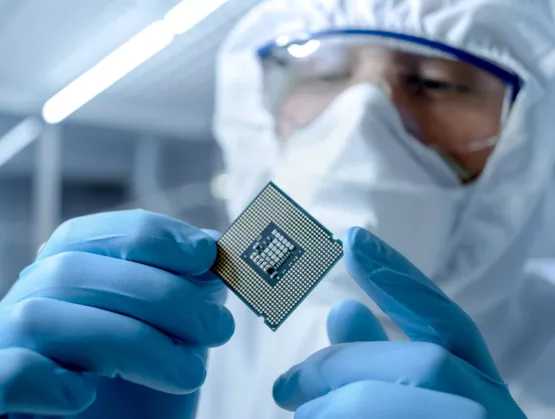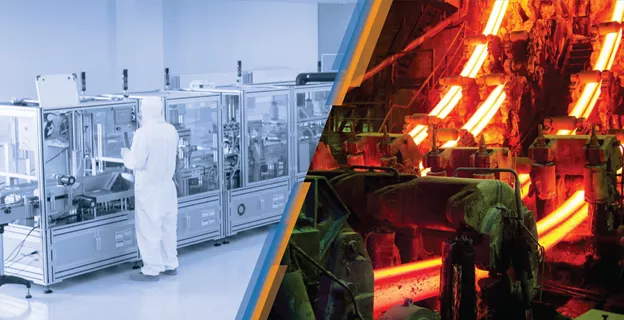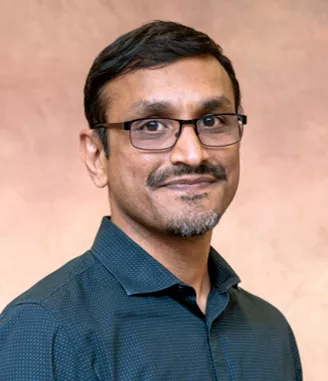
What do steel and semiconductors have in common? They both need time series AI to help capital-intensive manufacturing operations increase capacity at a lower cost.
A steel mill and a 200mm semiconductor fab face a similar challenge: How to improve output, whether in Tons Per Year (TPY) or Wafer Starts Per Month (WSPM), while saddled with a capital equipment footprint that cannot be readily replaced or easily expanded.
Extending capabilities by starting over isn’t a realistic option. Adding incremental capacity is also difficult. For example, there may be no physical space, older equipment that matches the installed base may not be available or harmonizing capabilities of the new equipment with the old can be a significant challenge.
The promise of Smart Manufacturing – bits are cheap but powerful
When equipment can’t be replaced, the only option is to make better use of existing resources. The inherent challenge is that older operations have been exhaustively tuned and characterized through years of constant use and maintenance. Getting better results through smarter manufacturing – using data and analytics – is a cost-effective way to increase production. Let’s explore what that means.
 A good way to think about where data can help is by mapping OEE (Overall Equipment Effectiveness) factors to specific tasks that analytics can enhance. The table below lists some of these areas and the reasoning behind each.
A good way to think about where data can help is by mapping OEE (Overall Equipment Effectiveness) factors to specific tasks that analytics can enhance. The table below lists some of these areas and the reasoning behind each.
|
OEE Factor |
Use Cases Areas |
|
Availability |
|
|
Performance |
|
|
Quality |
|
For example, a steel manufacturer needed to increase production output for an existing plant. However, the traditional way of achieving this involved a very expensive purchase of additional casting equipment. Instead of making that capital expenditure, the plant’s leadership calculated that a relatively small increase in availability would be enough, especially if that increase could be replicated at multiple plants. They decided to focus on increasing availability of the existing casting equipment by better identifying potential failures using data, reducing the outsized impact of unplanned downtime on availability. While this project is ongoing, new smart approaches to finding events of interest combined with a newly developing culture of expectations around using those approaches has shown promising results.
This experience was echoed by a semiconductor company customer who recently discovered patterns of etch equipment behavior that indicated the impending failure of the vacuum chuck. These patterns were discovered by training the time series AI engine to recognize the differences between wafers that had normal and abnormal after-etch CD measurements and by determining key signals as identified by software along with maintenance records to see that chuck-related signals were involved around the time that chuck replacement was performed. These models could be used to detect future chuck failures based on etcher signal data alone to reduce unplanned downtime due to failures during processing.

Another semiconductor customer was able to improve quality by using time series AI to detect operational patterns in its deposition equipment. The patterns indicated that delamination risk would be high for wafers processed during that time. Affected wafers could be stripped and reprocessed to avoid wasting time and consumables involved in putting them through subsequent steps. Further, equipment and process engineers used explanation scores to understand the root cause of the delamination. With this knowledge, they were able to make changes to the process recipe that drastically reduced the occurrence of delamination.
The reality of Smart Manufacturing – Using bits effectively isn't trivial, but there is a better way
One major challenge with Smart Manufacturing is moving from examples like these to production, aka escaping the dreaded POC purgatory. There is insufficient value at low scale and getting to scale can be very difficult. Our experience with overcoming this barrier is to work “in the now.” This means getting the operations teams – the equipment engineers, process engineers and maintenance teams – leading the project themselves. This requires two important factors that are frequently missing from POCs:
- Analytic tools must be fast and directly usable by reliability and process engineer.
- Analyzed data should be from recent operations (as opposed to months or years old data).
Analytic tools usable by non-data scientists does not mean training engineers to be citizen data scientists. That kind of training still takes significant time, effort, and focus that the SME doesn’t have to spare. It also does not mean abandoning of the plant’s data scientists – this is a valuable skill that is hard to obtain. The data science approach has definite, important applications; it is just difficult to scale. Instead, the analytic tools must be designed specifically to automate tricky or tedious tasks (like data engineering) and by simplifying choices to a level that is manageable by someone with limited time for training.
Using data from recent, ongoing operations is important because SME engagement is crucial to understanding and solving problems. However, SMEs are too busy to work on problems from six months or two years ago. Two-year-old data is useful for experimental controls, allowing analysts to compare many options for an academic brief to be prepared for data scientists working on modeling the problem. It is entirely irrelevant to the people who need results from it most: the operations teams where the SMEs work. Therefore an entirely different approach to evaluation and learning is beneficial – one that recognizes this tension between traditional POCs and the limitations that those traditional approaches face in the smart, data-driven world.
About the Author
 Falkonry CEO, Dr. Nikunj Mehta founded the company after realizing that valuable operational data produced in industrial infrastructure goes unutilized in the energy, manufacturing and transportation sectors. Nikunj believes hard business problems can be solved by combining machine learning, user-oriented design, and partnerships. Prior to Falkonry, Nikunj led software architecture for C3 IoT and database innovation at Oracle. He holds both Masters and Ph.D. degrees in Computer Science from the University of Southern California. An ACM member, he has contributed to standards at W3C and IETF.
Falkonry CEO, Dr. Nikunj Mehta founded the company after realizing that valuable operational data produced in industrial infrastructure goes unutilized in the energy, manufacturing and transportation sectors. Nikunj believes hard business problems can be solved by combining machine learning, user-oriented design, and partnerships. Prior to Falkonry, Nikunj led software architecture for C3 IoT and database innovation at Oracle. He holds both Masters and Ph.D. degrees in Computer Science from the University of Southern California. An ACM member, he has contributed to standards at W3C and IETF.